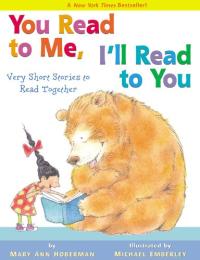Key Information
Focus
When To Use This Strategy
Appropriate Group Size
What is reader’s theater?
Reader’s theater is a collaborative strategy for developing oral reading fluency through reading parts in scripts. Students do not need to memorize their part but they will reread the script several times to build familiarity with the language and practice appropriate expression. The best reader’s theater scripts include lots of dialogue!
Why use reader’s theater?
- Students practice reading aloud, which helps improve fluency — the ability to read with accuracy, speed, and expression.
- By performing a script, students gain a deeper understanding of the text, characters, and plot.
- Reader’s theater involves collaboration — students work together to bring the script to life, fostering teamwork and communication skills.
- The interactive and dramatic nature of reader’s theater tends to engage students and make reading a more enjoyable experience.
- Participating in a performance boosts students’ confidence in public speaking and presentation skills.
How to use reader’s theater
Steps in the process
- Script Selection: Teachers or students choose a script or play to read. Scripts can be based on children’s literature, fables, fairy tales, historical events, or other relevant content. Tips on choosing scripts ›
- Character Assignments: Each student is assigned a specific character or characters from the script. Students may take turns reading the lines of their assigned characters.
- Rehearsal: Students practice reading their lines with expression, paying attention to tone, pacing, and intonation. They may rehearse individually or in small groups.
- Performance: The class performs the script as a “reader’s theater” production. Performances can take place in the classroom, during special events, or even in front of other classes or parents.
Watch a reader’s theater presentation (whole class)
Reading aloud from a script that has been adapted from a favorite book is a fun and motivating approach to instruction in fluency and expression. (Balanced Literacy Diet: Putting Research into Practice in the Classroom)
Watch an example of implementing the reader’s theater strategy
A second grade teacher shares his 5-day process for staging a reader’s theater presentation in his classroom.
Collect resources
Reader’s theater lesson plans (with scripts)
Reader’s theater scripts
Differentiate instruction
For second language learners, students of varying reading skill, and younger learners
- Use easier scripts with fewer words for younger or struggling readers.
- Write the script (or the student’s part of the script) with print that is easy to read i.e. larger or in preferred font. Supply Braille scripts when needed.
- Give the student their part in advance. Encourage them to practice at home with their parents
- Have students read parts together.
- Allow advanced students to write parts of the script.
- When assigning roles, be sensitive to students’ individual needs. Assign roles accordingly; provide extra, individual practice if needed.
Extend the learning
Math
Teachers can use reader’s theater as an instructional technique for mathematical word problems. This example could be used for a reader’s theater about 100’s day and the concept of 100 .
Social Studies
Here are reader’s theater scripts about America in varying reading levels.
See the research that supports this strategy
Bafile, C. (2005). Reader’s Theater: Giving Students a Reason to Read Aloud.
Prescott, J. (2003). The Power of Reader’s Theater .
Children’s books to use with this strategy

You Read to Me, I’ll Read to You: Very Short Stories to Read Together

